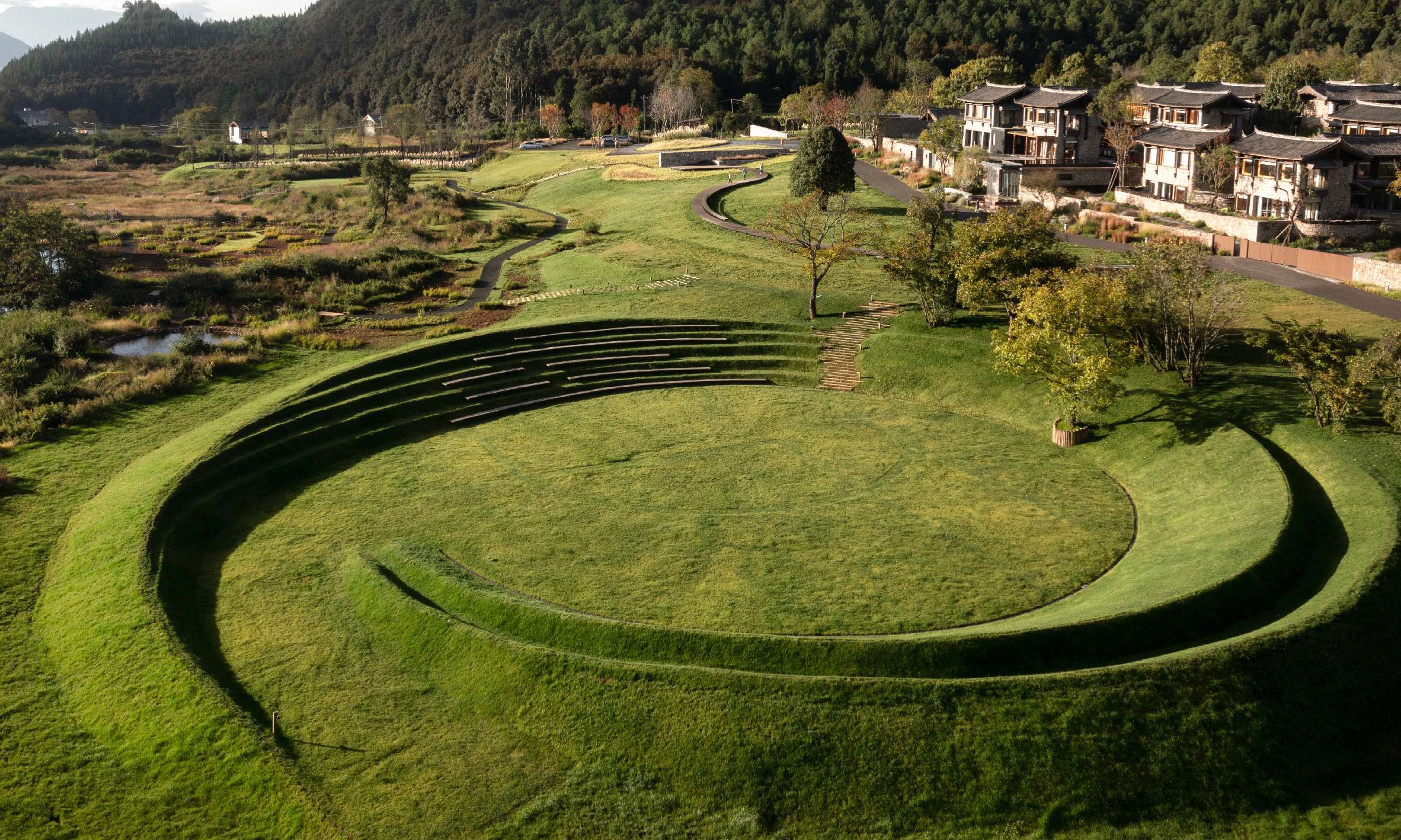
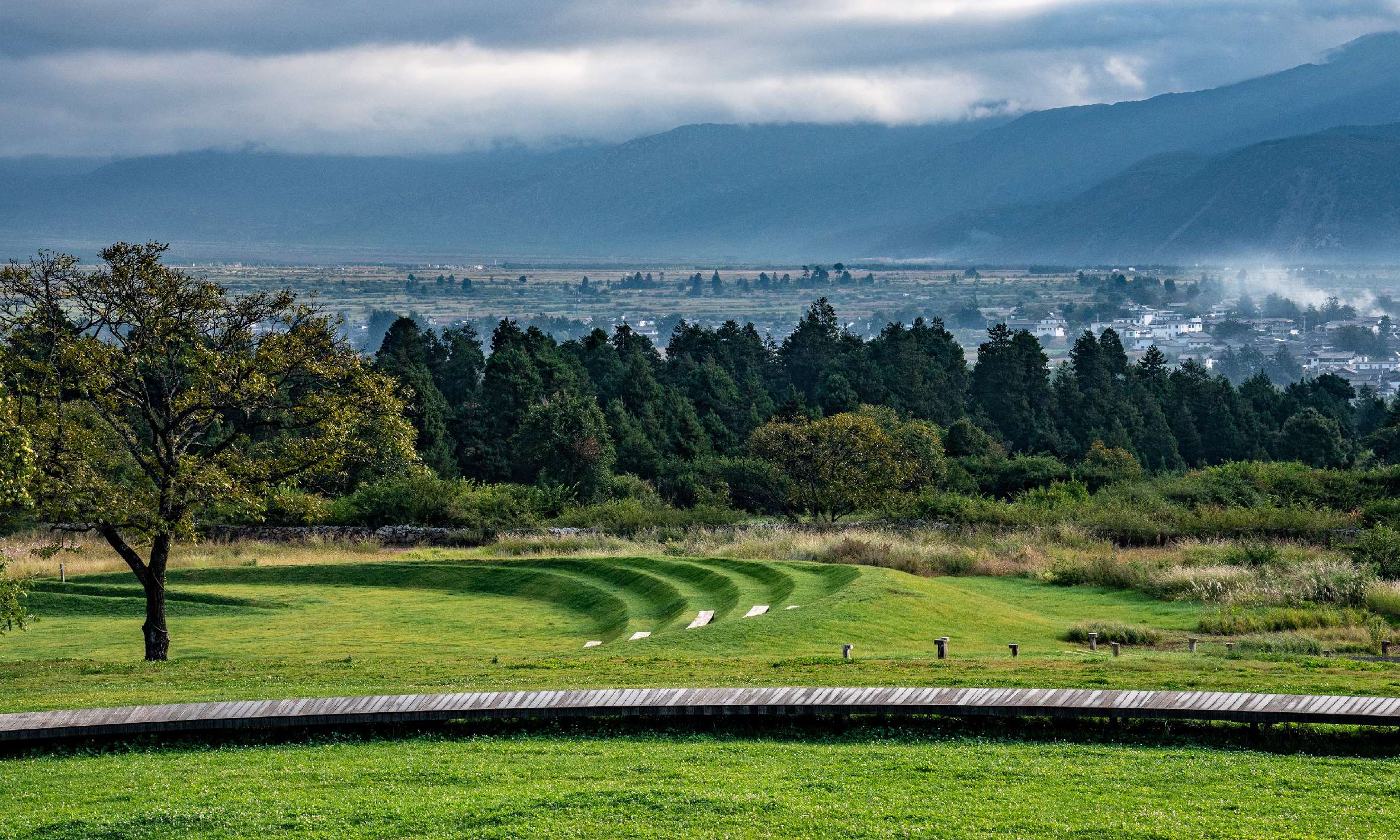

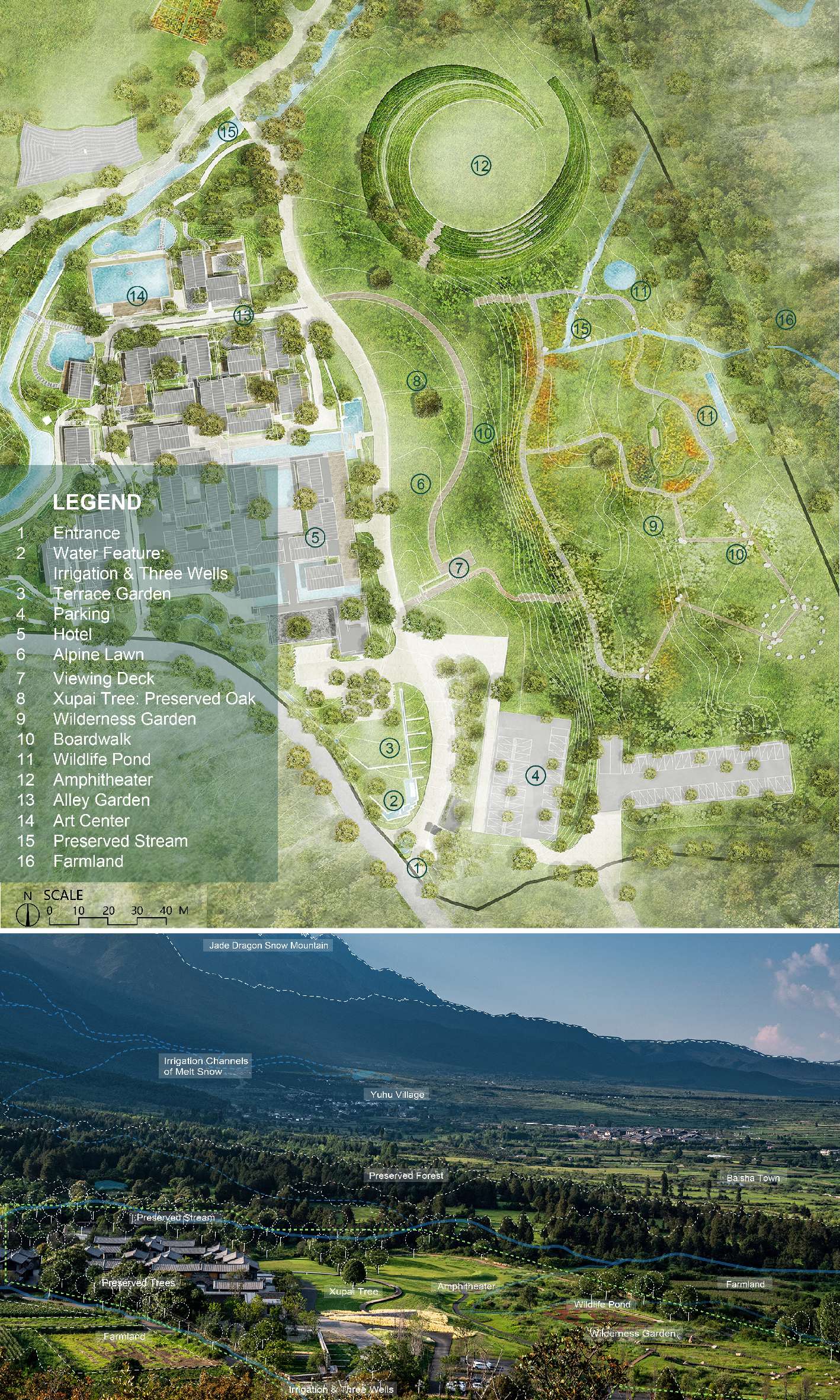
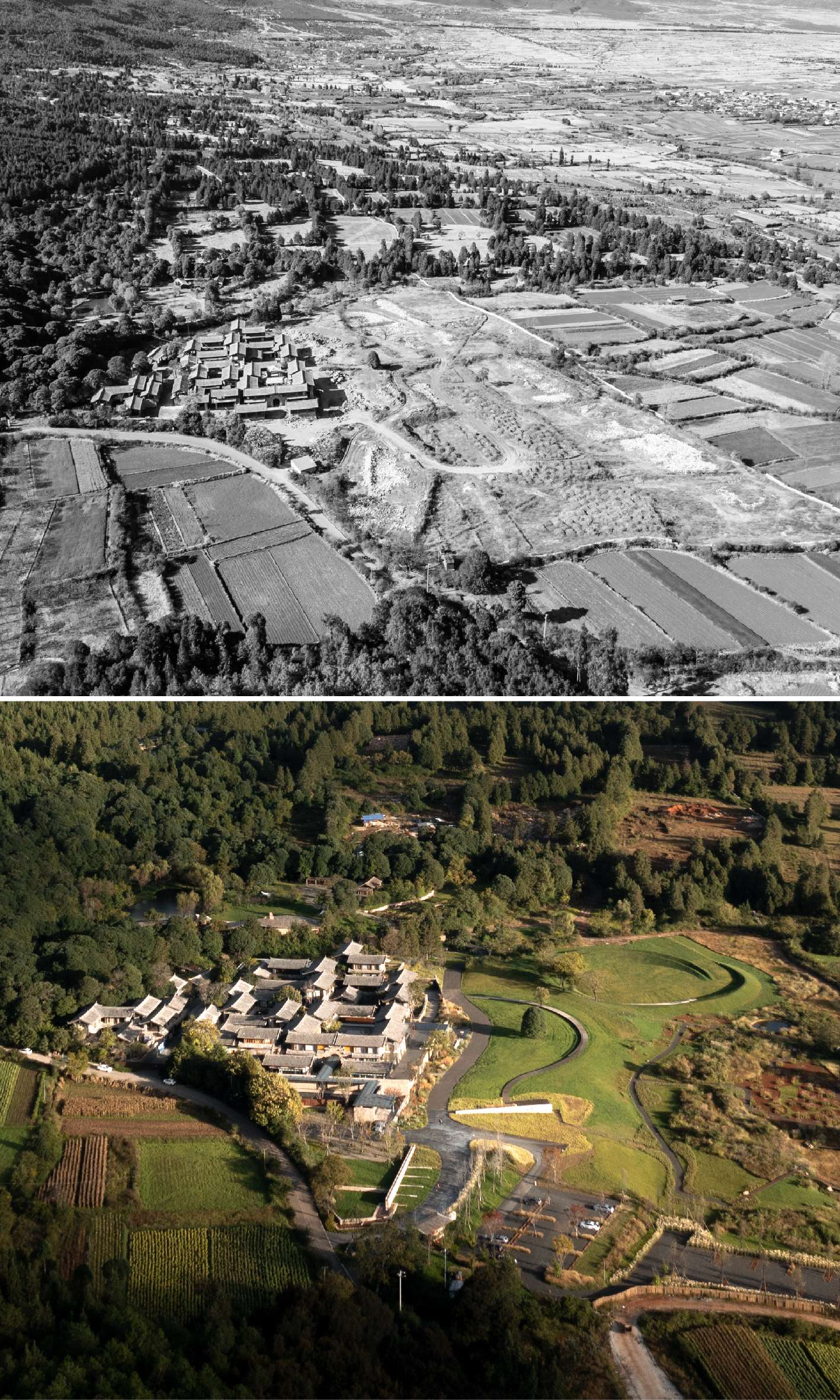
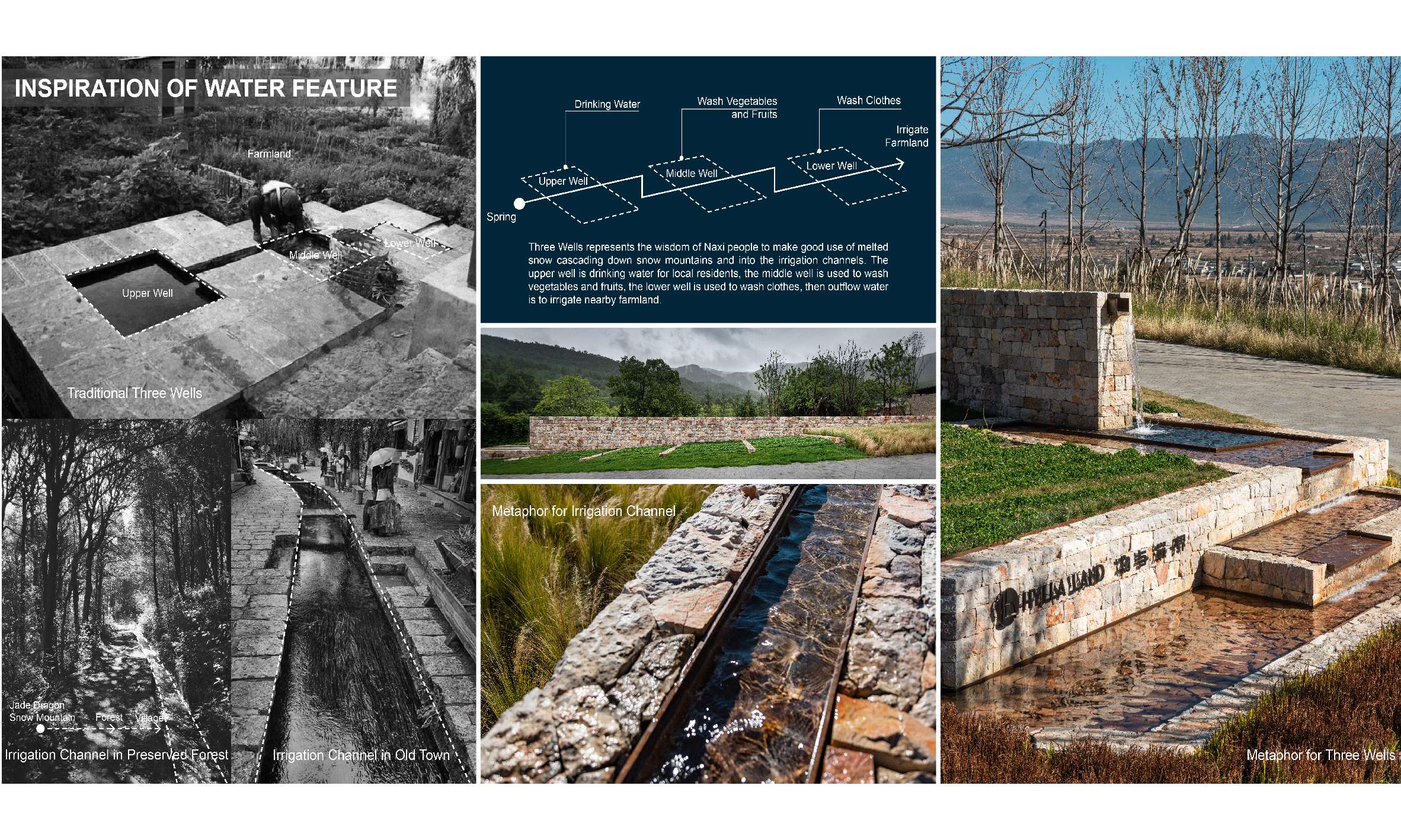
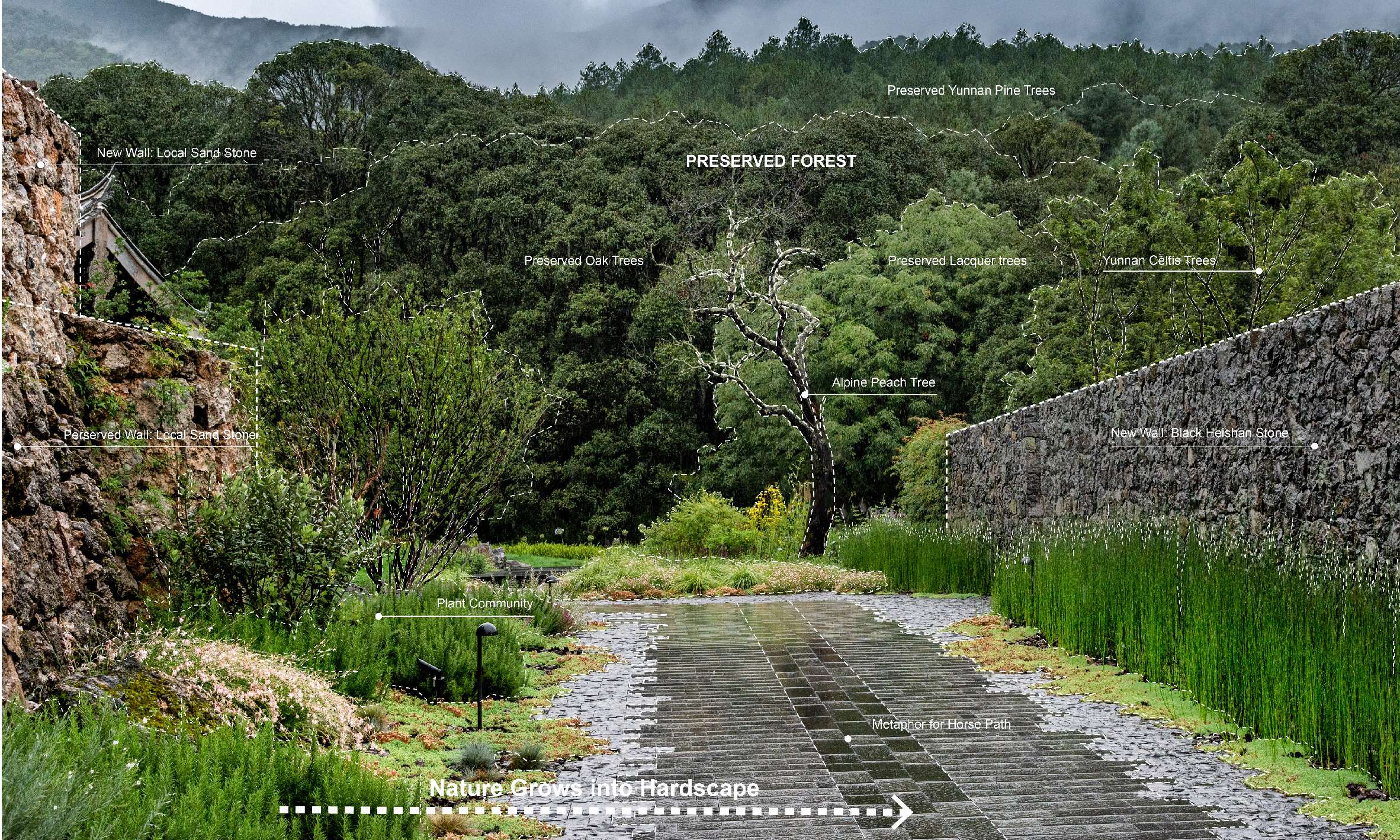
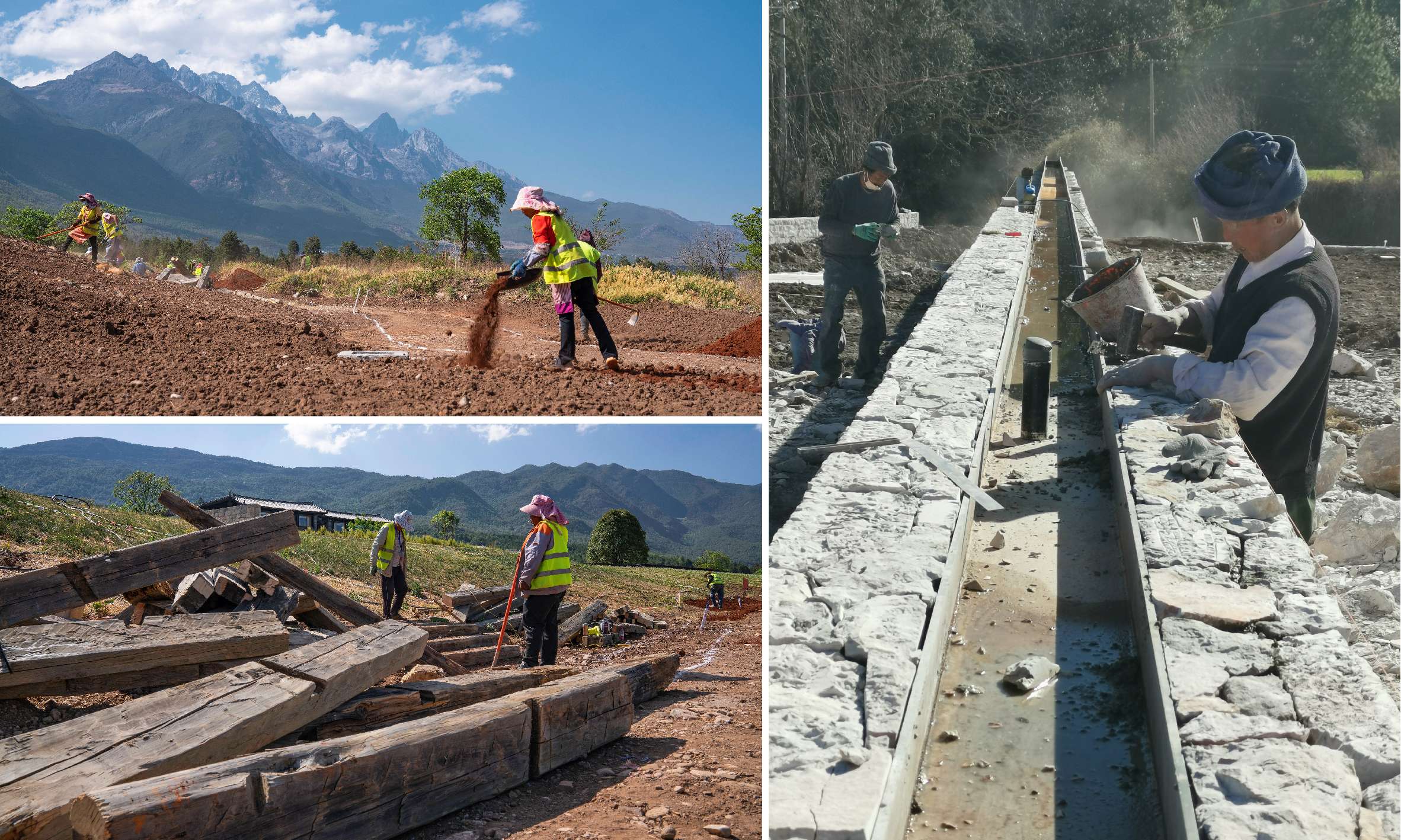
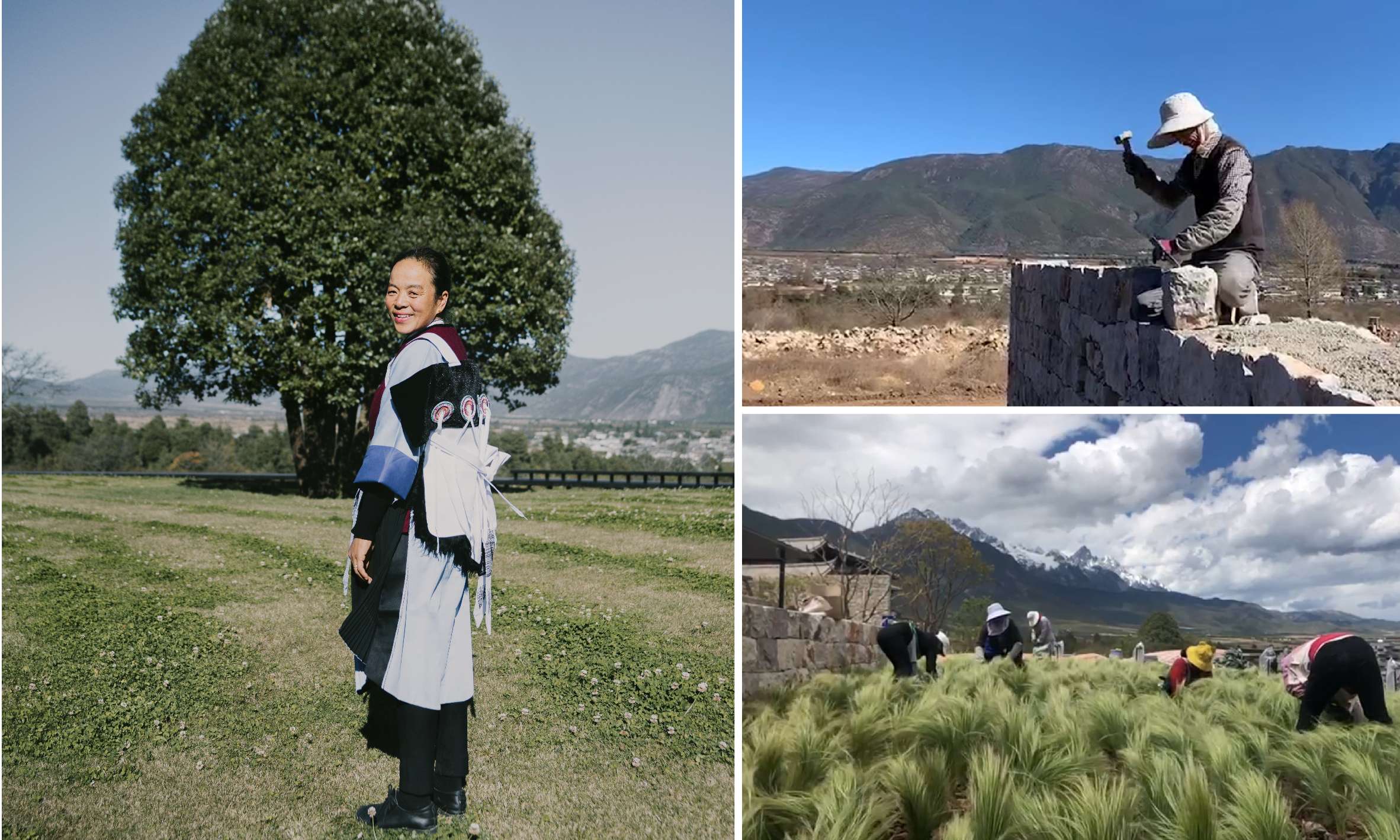
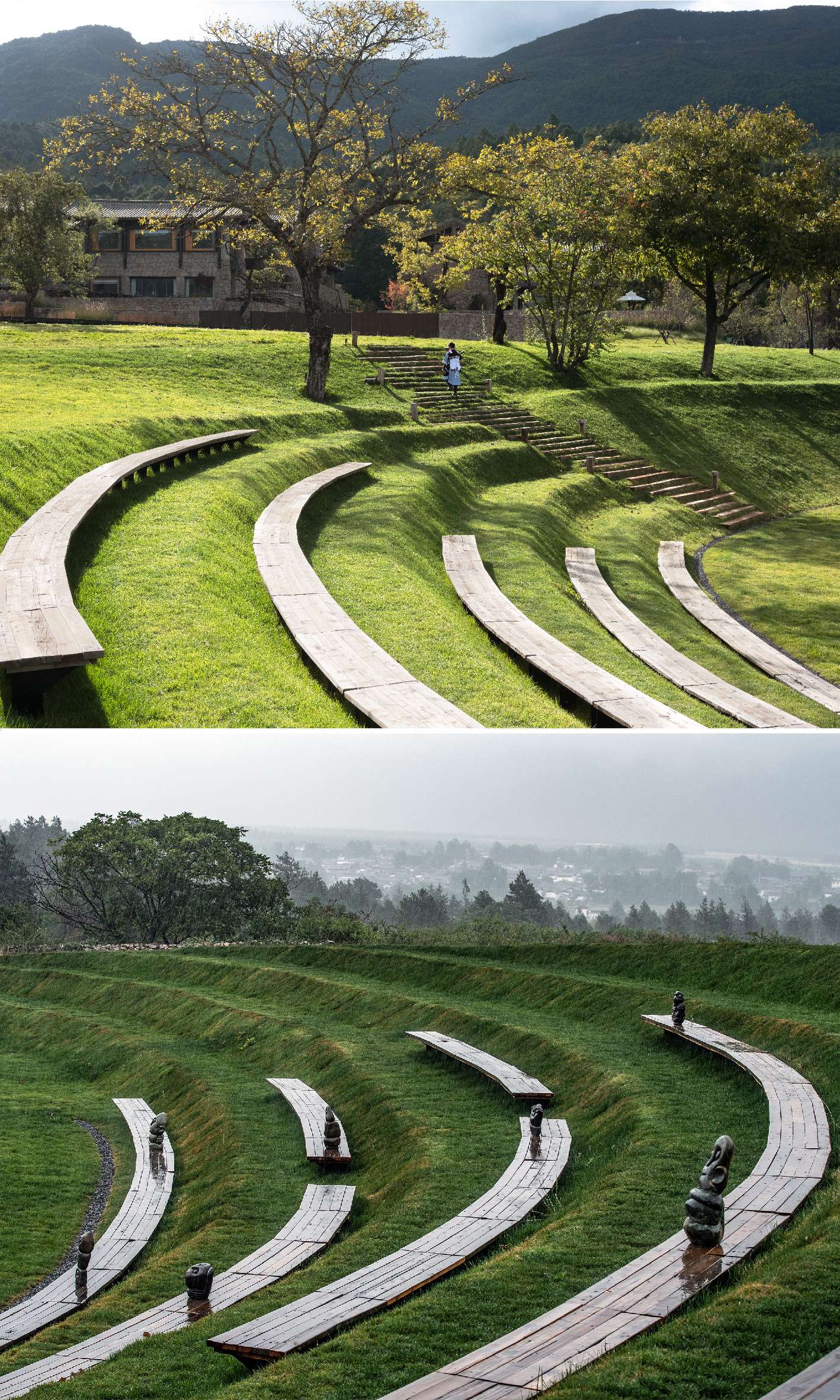
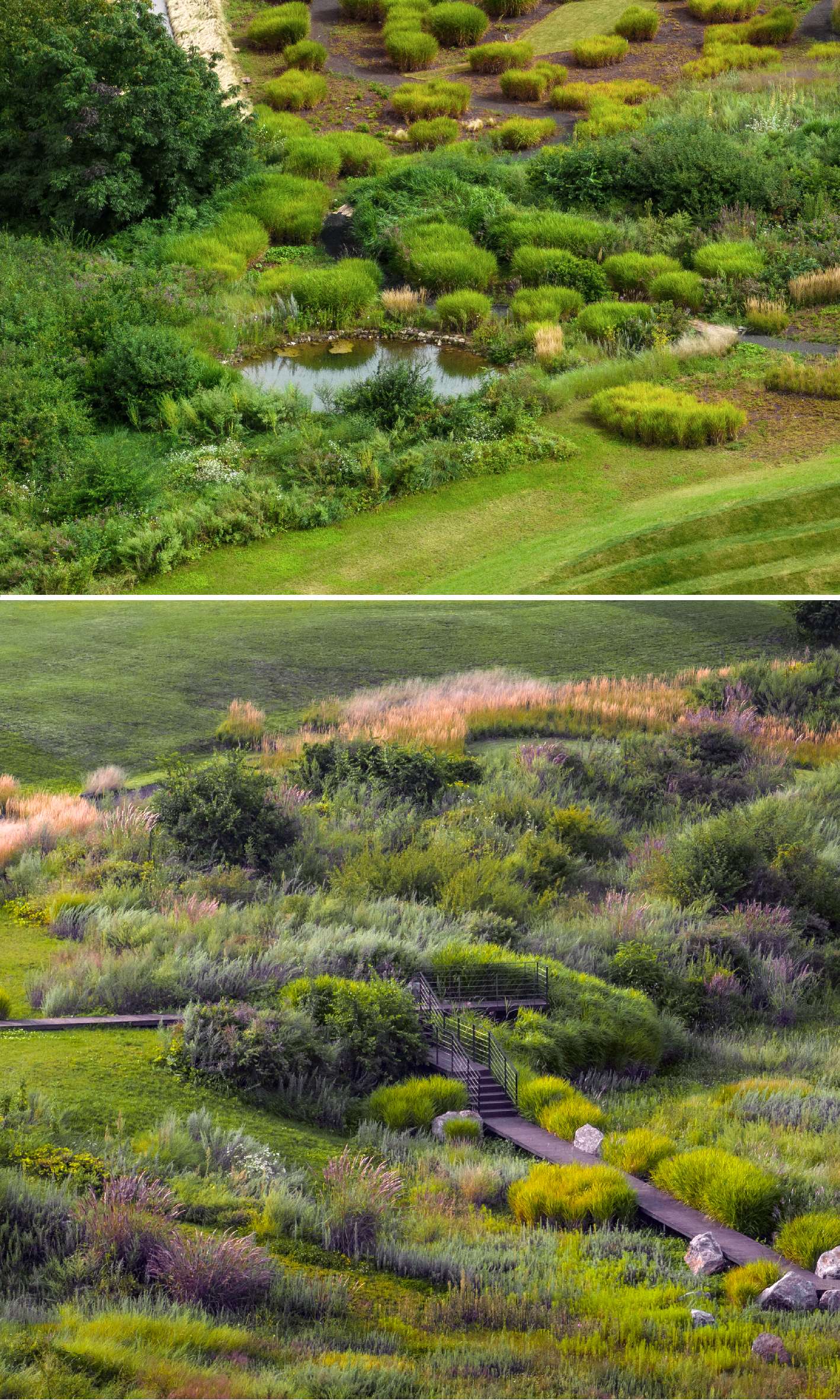
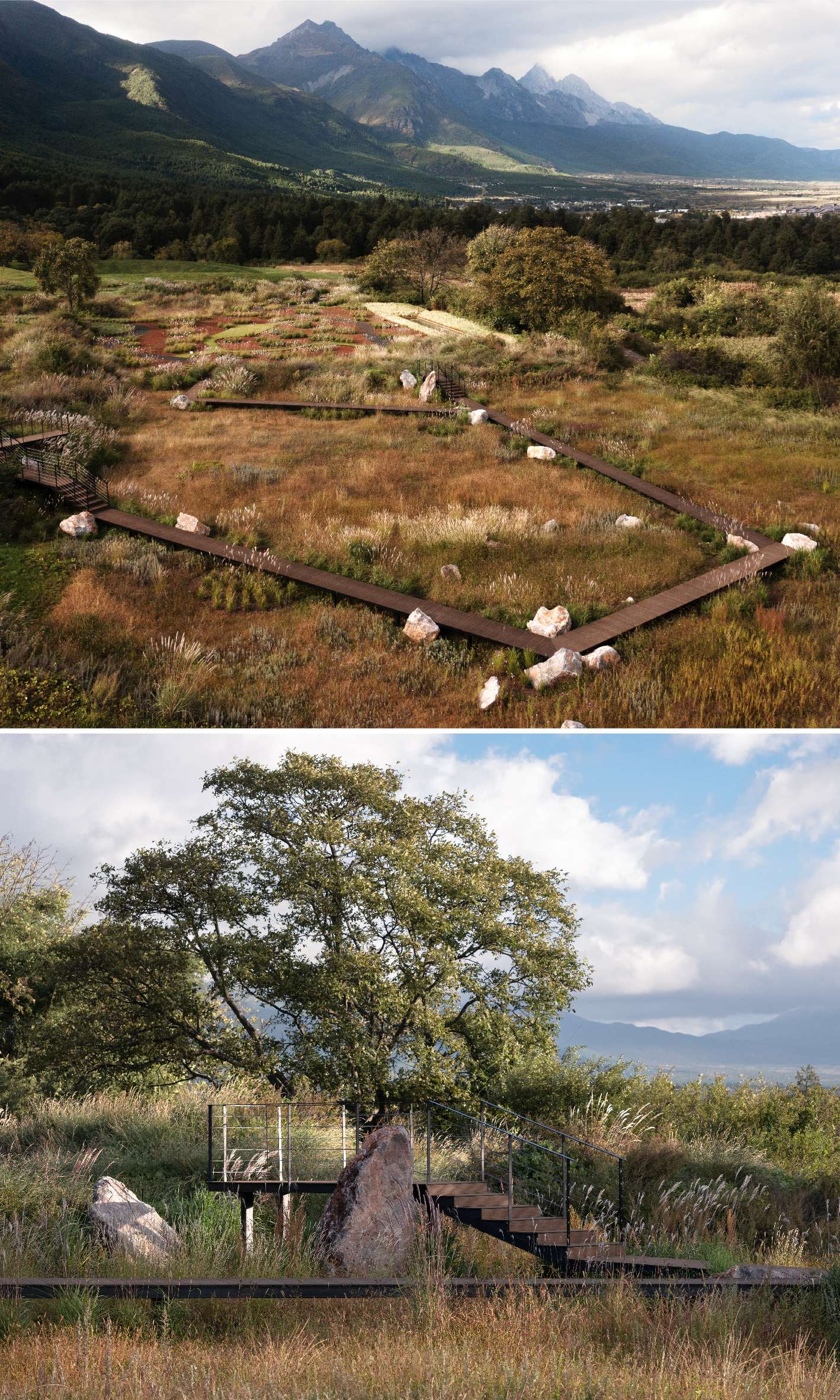
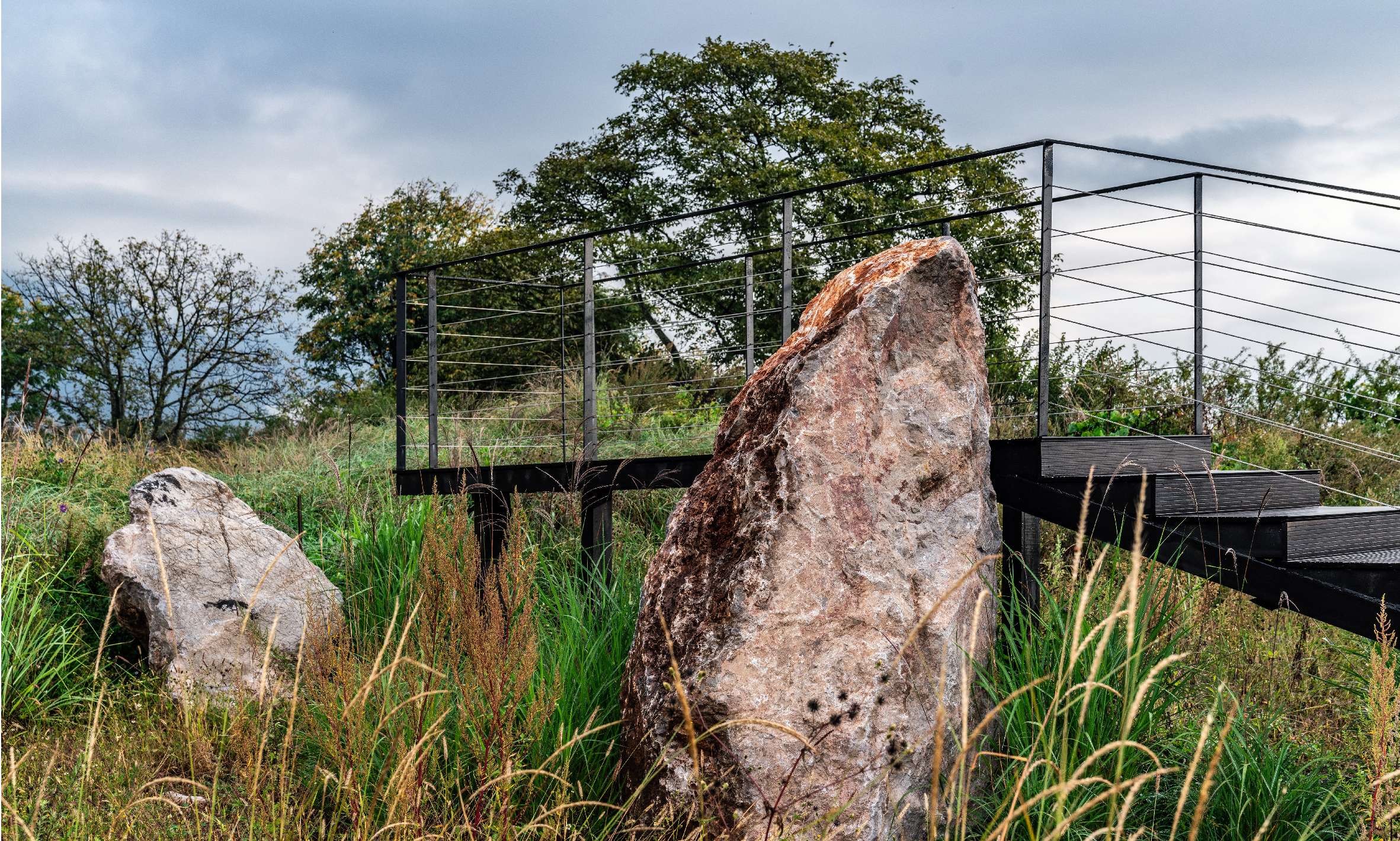
Alpine Garden,Wilderness Garden and Amphitheater
Alpine Garden,Wilderness Garden and Amphitheater
Project Statement
Within Pan-Himalaya Region, Alpine Garden is situated on hillside of Jade Dragon Snow Mountain in Lijiang, China, at an altitude of 2560m high. The 6-hectare site sits close to UNESCO World Heritage Sites, Yuhu historic village in north and Baisha historic town in east which can be overlooked from the garden.
The design effort draws upon the site, establishing a distinct closeness with indigenous Naxi culture and alpine nature in creating a place of comfort, solitude and peace. The inspiring use of native plants, melt snow water, local stones and ethnic textures not only creates a variety of spaces and views but also draws visitors in to explore the rich local culture. The wilderness garden has become an educational center focusing on the importance of indigenous vegetation and wildlife to the biodiversity of the Lijiang. The artful amphitheater providing immersive and interactive space for Naxi traditional festivals and outdoor art exhibitions becomes culturally important for local community.
Preserve Cultural and Native Plants
Naxi people always surround an evergreen tree which is called Xupai to build their homes and create their village. The spiritual Xupai of alpine garden is a large, aged oak tree with 8 thick branches that resides at the center of the site for hundreds of years. The team carefully kept it untouched and used it as a visual focal point to create culturally sensitive landscape which blends together new and old seamlessly. In respond to the surrounding farmland context, the meandering wooden boardwalk leaded visitors through a characteristic alpine lawn which mixed with shamrocks to symbolize linear ridges of wheat field.
Preserve Local Stone and Craftsmanship
With uncompromising craftsmanship, local stonemasons and carpenters carried out all stone and wood related works with materials sourced within 50km. By using traditional technics to carve and stack, they deliberately remain all subtle texture details on every stone while the design form is contemporary and simple. With young people leaving for big cities to work, aging population has become a significant issue in Lijiang. The project led to the recruitment of two young apprentices by stonemasons and one by carpenters, therefor it played a crucial role in the inheritance of traditional skills in the village.
Resilient Wilderness Garden
Working with botanists and local villagers, the team designed a resilient wilderness garden as an educational center focusing on the importance of biodiversity of Lijiang. Existing walnut and pear trees offer food and nesting spaces for birds, while a rectangular wildlife pond nearby provides drinking water and bath for birds and even for cattle. The boardwalk is lift 60cm up to make sure that animals and insects can move without disturbance. Stacked rocks not only acts as aesthetics element but also serve as shelter for small animals. The perennial wildflower meadow serves as a vital feeding and nesting habitat for pollinators such as bees, butterflies throughout the seasons.
To maintain the existing groundcover species and shape the landform appropriately, a number of procedures must be followed, including the removal of rubble and plant remnants, the crushing of the clay soil, the mixing of topsoil, and the refilling of topsoil. Wild grass restores back to its original state in just 2 months. To strike a compelling dialogue, a zigzag boardwalk weave his way through the grassland to provide visitors extraordinary experience with dramatic and intimate overlooks. Rustic rocks are used as land art to interactive with boardwalk and grassland and become a spiritual symbol of wilderness garden. To prevent weeds turning into flammable fuel for wildfires, it introduces stone wall and open grass spaces to separate wilderness garden from tree grove and structures.
Amphitheater: Artful Space for Local Naxi Community
On account of existing sunken topography and views to the snow mountain, the team artfully creates an amphitheater in the northeast part of the site. Recycled old roof beams and timbers are embed in ground as stepping stone and interweaved on the ridge to outline a circular amphitheater as an elegant piece of land art. Natural play opportunities are embedded in the landform where children are running, climbing, jumping, dancing or rolling. It also accommodates great opportunities for local sculptors to exhibit their works and becomes a social space for artists. In traditional torch festival, the amphitheater transforms into an immersive and interactive environment to experience Naxi culture and craft.
Cultural and Sustainable Water Features
Water features are conceived as abstracted references to the historic Three Wells concept. To make irrigation system sustainable, a circular water retention pool is created to function as an irrigation storage unit. Moreover, it also serves as a wildlife pond for birds and animals. It is referred to as the Eye of Alpine Garden by locals.
